Jump! Drag! Track! Land!
Got confused? fret not! This is skydiving summarised in just 4 words. Going skydiving is a one-of-a-kind experience that is unique for everybody. The feel of the wind touching your face and elevating your spirits is something that you need to experience at least once in your life. Become one with nature as you sing the melody of air, wind, and water somewhere around 15,000 feet above the ground.
There’s no doubt that Sydney has been a tourist magnet for years now. People from around the globe travel here looking to spend some quality time indulging in a number of adventurous activities. Sydney proves to be a convenient as well as affordable option when it comes to choosing an optimal skydiving location. Whether you’re a dare-devil looking to push past your limits, a physics enthusiast with a project on their mind, or someone with skydiving on their bucket list, this place has multiple skydiving drop zones for you.
Things to Consider Before Going For Skydiving In Sydney
Don’t confuse skydiving with parachuting or paragliding, as all these differ a lot. In skydiving, first, the aircraft picks you up and takes you to a certain height before you really jump off of it to experience freefall afterwards. The whole of this activity is not as easy as it might seem to many, as it requires a lot of preparation right before the day you actually go skydiving.
To avoid any complexities and make it easier for you to get along with this adventurous activity, we’ve compiled a list of some essential factors to consider and keep in mind before you skydive in Sydney.
1. Types Of Skydiving
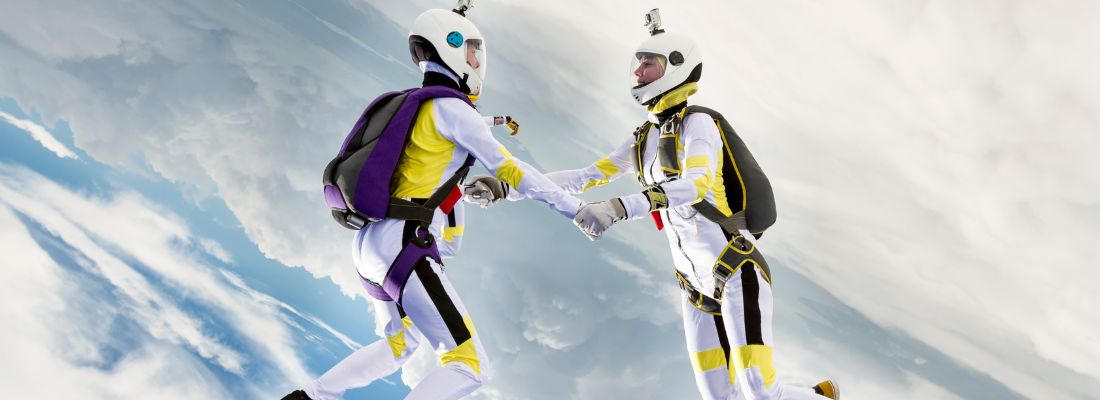
To start off everything, begin by acquiring knowledge about and choosing exactly which kind of skydiving you want to do. For beginners, tandem skydiving seems to be the best option to get engaged in, as a skydiving instructor will be overseeing their activities.
Tandem skydiving: It’s usually cheaper than other types of skydiving. It’s mostly famous among students, as they feel secure being guarded by a tandem instructor who looks after their parachute deployment.
Static line diving: This one is quite popular among various amateur skydivers. In it, the safety of the skydiver remains with the instructor. A static line is attached to the parachute that opens itself automatically as soon as the skydiver jumps off the plane. On their journey, the sky drivers are free to navigate and make their way through the air until they reach the ground.
Accelerated freefall skydiving (AFF): All novice skydivers prefer doing this type of skydiving. Accelerated freefall skydiving is the best way to learn every know-how of skydiving. For beginners and students, two trained professional instructors will be there to guide them on their journey. When one gets used to doing this, i.e., after a number of sessions, they will get their licence to become a solo skydiver.
2. Different Skydiving Altitudes To Begin With
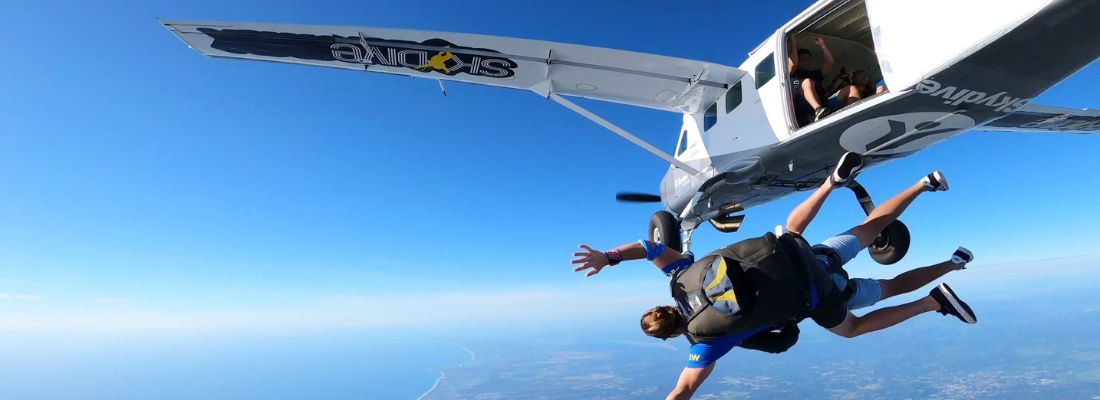
There’s always a level at which to choose skydiving. And for those who are new to it or are trying it out for the first time, they prefer going at low altitudes. Depending on the way you want to explore, there’s room for everyone. After all, floating 15,000 feet in the air for the first time might feel a bit daunting. Thus, start small, anywhere between 3000 and 10,000 feet, to get the hang of it, and once you get used to doing it, move to the next level.
Skydiving at 15,000 is not a feat for everybody, so choose carefully what you are starting with at first. Following is a bit of explanation for the different kinds of experiences that you will have at different altitudes.
A- Super Low Altitudes (3,000 – 5,000 feet)
- Freefall time: 0-15 seconds.
- Suitable for: Solo jumpers only.
- If it is cloudy, you can jump from 2,200 feet (known as a “hop ‘n’ pop”).
B- Base Tandem Height (10,000 feet):
- Freefall time: 30-40 seconds.
- Perfect base altitude for tandem jumps.
C- Ideal Tandem Height (14,000 feet):
- Freefall time: 60-70 seconds.
- One of the best options for tandem skydives.
- Achieved only with a combination of good planes and favourable weather.
D- Maximum Height (18,000 feet):
- Freefall time: 80-90 seconds.
- Advanced level, and very few airfields offer this altitude.
3. Ideal Timing Matters
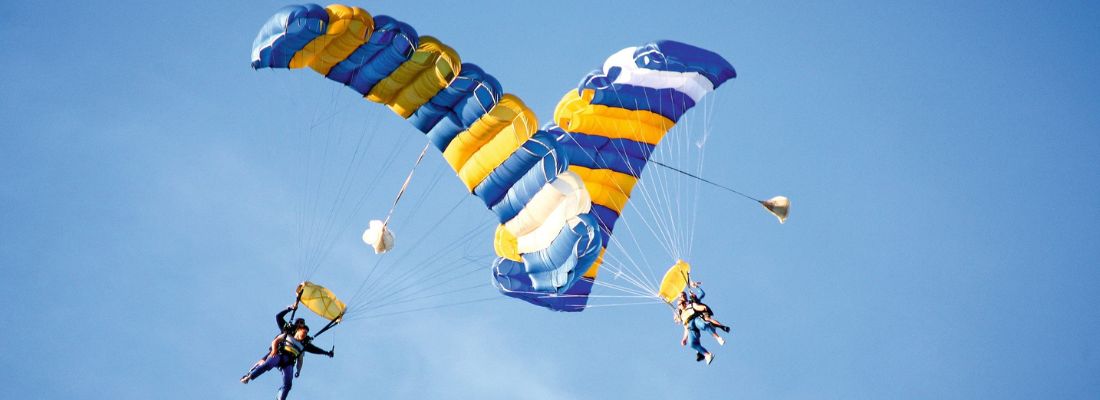
The fact that you can actually skydive or not depends on the weather, which needs to be favourable. Exceptions are also there, and thus the time arrives when people have to cancel out on their plans for this adventurous activity. Thus, it’s always advisable to keep some extra hours aside before you actually engage in skydiving.
Despite being blessed with great sunny weather throughout the year, the period from October to March is the best time to visit this city for skydiving. Simple geographical reasons: no hard maths involved here, the temperature is ideal, and there are no strong air currents to destroy your vacation mood. Plus, you get to enjoy the best of what the environment has to offer.
- Best Seasons to Skydive: Summer, Spring, and Mid Autumn.
- Best Time to Skydive: Morning (afternoons, only if the sky is clear and not too hot).
4. Right Attire Matters
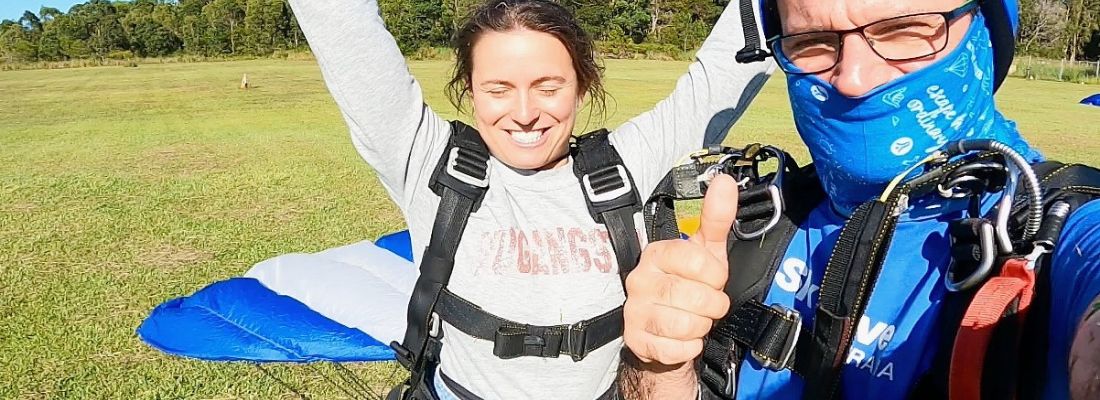
Picture those videos of skydiving in your mind you’d watched. There’s no particular dress code for skydiving, as the main conditions lie in being present in simple, comfortable clothing. Thus, try going with loose, casual clothing akin to active wear.
You can also wear jeans, tracksuit pants, fully enclosed sneakers, or flat-soled shoes. Any kind of heel or high boot is not permitted at all. Though a custom jumpsuit is provided, your clothing should be such that it does not interfere with the custom suit provided for skydiving. Your instructor might also offer a pair of fleece and gloves if required.
5. Safety/Precautions Is Non-Negotiable

Safety is of paramount importance when it comes to skydiving in Sydney. Experienced tandem instructors guide you through every step of the diving journey. It includes wearing the right gear, appropriate clothing, an AAD (Automatic Activation Device) for the safe landing of the parachute, and also setting up the cameras in case you want to document your aerial thrill. Before taking the leap, the guides make sure that you follow all the instructions religiously. Below is the list of prerequisites for skydiving in Sydney:
A list of safety gear that must be provided includes:
- Goggles: To protect eyes during freefall, with an option to buy the pair as well. It will also help you see better, with the air adding to the thrill.
- Helmets: Impact-rated helmets are used to ensure that you are safe at all times.
- Jumpsuit: Essential to protect the skin from any unwanted abrasion. It will protect your skin from debris or any such impediment, easing stability during freefall.
- Altimeter: A critical piece of equipment to ensure that the parachute is deployed at the correct barometric pressure.
- Automatic Activation Device (AAD): This device is equipped in all the rigs; it automatically deploys the reserve parachute if there is a risk against safety measures.
6. Medical Considerations

Being medically unfit is a big no-no everywhere for participating in activities involving health risks. This does not automatically mean that you will not be allowed to skydive. Rather, your case will be treated with much more precaution and care. Be prepared for even getting disqualified from tandem skydiving if such conditions arise.
Weight limit per person: Up to 110–115 kg. Individuals weighing more than that may not be allowed to skydive. They need to go through a fitness assessment before becoming eligible for skydiving. Plus, a surcharge is also applicable for those who weigh more than 95 kilogrammes.
Age group allowed: No, it’s not just about minors not being allowed. It is more about safety and the ability to glide through the air with ease. Minors over the age of 12 are allowed to skydive in Australia as per law. But the only catch is that they must be accompanied by a legal guardian.
Phobias: You should be ready to overcome acrophobia or altophobia tendencies. Similarly, if you have thalassophobia, please come prepared beforehand. Kids below 16 may or may not be allowed, depending on the physical assessment. Be ready for that as well.
To put it on a list, here’s the no-go for you if you suffer from these medical conditions:
- Being overweight
- Respiratory/Asthmatic disorders
- Diabetes
- Pregnancy
- Back/Neck injuries
- High blood pressure problems
- Cardiovascular diseases
- Seizure/epilepsy disorders
7. Cooperate With The Skydiving Professionals

While it’s primarily an adventurous sport, it comes with a set of pros and cons. Remember Archimedes’ principle of buoyancy? You are going to float in the air by displacing air. So, expect a noumenon and a phenomenon working in tandem with each other. Your safety and well-being are at stake. And that’s a non-negotiable thing. Experienced tandem instructors will guide you through every step of the jump. So, listen and follow each and every step of skydiving to have a blast!
8. Food Intake

While overeating is not recommended at all, you must ensure that you do not end up overeating at any cost. Going skydiving on an empty stomach will elevate your chances of getting lightheaded and eventually passing out. Avoiding greasy food before going on a dive might make you lazy and sluggish at the same time.
Going for food that is light and healthy is recommended for people of all ages, as it will make you feel fresh and fine. Make sure to stay hydrated, as it will help your nerves remain calm while you are in the drop zone.
9. Restrictions On Consumption Of Alcohol And Drugs
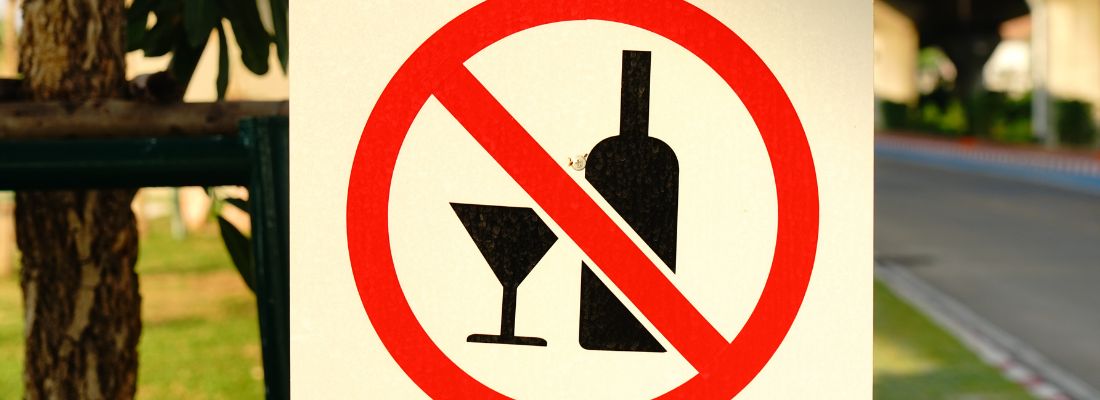
For all those who’re going skydiving, they need to strictly avoid alcohol or any narcotics-based products for up to 24 hours before they go for this adventurous activity. Doing so is mandatory, as most of the active skydive centres have a zero-tolerance policy against those who have consumed any sort of intoxicant product before they go skydiving. For those who are into scuba diving, ensure you haven’t gone for it 24 hours before your skydiving is scheduled.
Ideal Spots For Skydiving In Sydney
Skydiving in Sydney really features a very competitive marketplace, and all the service providers do their utmost to ensure they are offering the best services from their end to all individuals. At most of the dive sites, you will be given an orientation regarding the safety measures to keep in mind and follow while going for this activity.
Most of the freefalls that people go through usually last for about 60 seconds at maximum, with a speed exceeding the 220 kmph mark. Despite having so many options to choose from, the following are the best ones that will offer you the perfect skydiving experience for yourself:
1. NewCastle

Get ready for feasting with bird’s-eye views of Lake Macquarie, Newcastle, and its alluring beaches. It is a harbour city with the skydiving dropzone in Belmont, Newcastle. You can spot different panoramic views of the beach town, Lake Macquarie, Hunter Valley, and the coast line. There are two options to choose from, i.e., 8,000 ft. and 15,000 ft., each having their own price.
| Name | Newcastle Skydive |
|---|---|
| Website | skydive.com.au/locations/sydney-newcastle/ |
| Address | Lake Macquarie Airport, 864 Pacific Highway, Marks Point NSW 2280, Australia |
| How To Reach |
By Bus: Hop on bus no. #14, #29, or #99 and get off at Ron Ferry Park. The location is mere 4 kms away from the meeting point. You can also deboard at the Pacific Highway Stop opposite Lake Macquarie Airport. |
| Slots Available | Every 30 minutes between 07:00 AM to 02:00 PM - Daily |
2. Wollongong (Skydive Australia)

Talking about the dropzone for the Wollongong dive, it is North Wollongong Beach. It lies about 2 kilometres north-east of the downtown area. It is the only beach dropzone in Sydney. During your descent, you can get a glimpse of the famous Opera House of Sydney and other southern Sydney beaches. It’s the perfect place for those who are new to skydiving, as skydiving here happens at a height of 7,000 feet.
| Name | Wollongong Skydive |
|---|---|
| Website | skydive.com.au/locations/sydney-wollongong/ |
| Address | George Hanley Dr &, Cliff Rd, North Wollongong NSW 2500, Australia |
| How To Reach |
By Bus: Board bus no. #65 and deboard it at Pleasant Ave before Virginia Street. It is a 5-minute walk to the dropzone. Driving by your car with a working GPS navigation system will also land you at the right place easily. By Train: Catch a train to North Wollongong station, a 15-minute walk from the dropzone. Alternatively, you can opt for a 5-min taxi to the dropzone from the station. |
| Slots Available | Every hour 7:00 AM to 12:00 PM - Daily |
3. Hunter Valley

A perfect fusion of breathtaking views and exhilaration comes from the Hunter Valley, which will fulfil your dream of skydiving very well. Lasting for about 60 seconds, this dive takes place at 15000 feet and will cost you around $250. And don’t just go after the price tag; with the excellent views of NSW beaches, Hunter Valley Vineyards will be an excellent choice to glide over after experiencing the best fall ever.
| Name | Hunter Valley Skydive |
|---|---|
| Website | huntervalleyskydivers.com.au/ |
| Address | 74 Range Road, Whittingham, NSW 2330 |
| How To Reach |
By Car: Take the New England Highway through Whittingham to reach Hunter Valley. You can add the location of the dropzone onto your navigation system for a seamless experience. By Train: Take the Central Coast and Newcastle line from Sydney. Deboard at the Hamilton Station, and switch to the Hunter line. Thereafter, get down at the Whittingham train station, which is quite near to the dropzone. |
| Slots Available | Saturday & Sunday - 7:00 AM, 8:00 AM |
Conclusion
Skydiving is not just another sport or fun activity, but a journey into the extraordinary. From the thrill of freefall to the beauty of the panoramic views, every moment that you will experience will create a lifetime memory for you. Time spent amongst the clouds, the blue of the sky, and the vibrant city below will be a perfect merger of cherished memories of the soul.
Frequently Asked Questions
One needs to be more than 12 years old before they can skydive in Australia. Anyone under 18 years of age needs to carry their guardian’s or parent’s written permission.
The maximum weight allowed to skydive is 115 kg. Everyone weighing over 95 kg needs to pay a surcharge before they can actually take part in skydiving.
Go in casual clothes that are comfortable for you. Take into consideration the weather on the day you are going skydiving, as it might be a bit cooler at 15,000 feet. Usually, all the skydiving companies offer a jumpsuit as well as goggles to wear. For shoes, prefer wearing secure footwear that must be enclosed, such as runners.
Almost everyone who has good health can do a tandem skydive, even the old ones. Still, the skydiving agents reserve the right to cancel an individual’s skydive based on their own assessment that might be related to weight, age, and health.
Being an extreme spot, risks are always there. Still, due to the advancements of technologies and safety devices like AADs, this activity has become a lot safer.
Skydiving is a weather-dependent activity, and factors such as rain, wind, and clouds do affect the skydiving experience of an individual.
Yes, you can breath while skydiving, and it’s recommended to do it as it’s a crucial part of the skydive experience that lasts anywhere between 40 and 60 seconds. For those who panic doing so, prefer looking at the horizon instead of looking down directly to breathe normally.

